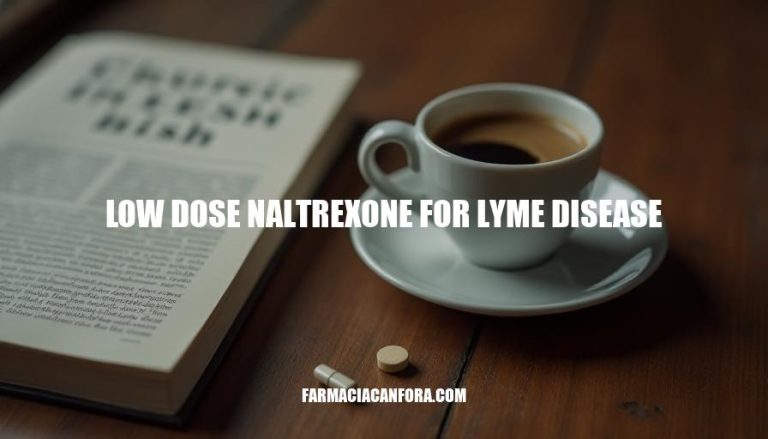


Lyme disease is a tick-borne illness caused by bacteria. It’s spread through bites from infected black-legged ticks that live in grassy and wooded areas. Early symptoms include fever, headache, fatigue, and a distinctive skin rash.
If left untreated, Lyme disease can lead to serious problems like arthritis, facial paralysis, and heart and nervous system issues.
Low-dose naltrexone (LDN) is believed to be effective for Lyme disease through several mechanisms, primarily involving immune modulation and anti-inflammatory effects.
Firstly, LDN modulates the immune system by acting on microglial cells in the central nervous system. Microglial cells are a type of glial cell that act as the primary immune defense in the central nervous system. LDN inhibits the activation of these cells, reducing the release of pro-inflammatory cytokines and other inflammatory mediators.
This modulation helps to decrease chronic inflammation, which is a common symptom of Lyme disease.
Secondly, LDN has an impact on the opioid receptors in the brain, which can lead to a reduction in pain symptoms. By blocking these receptors, LDN can alter the perception of pain and provide relief from the chronic pain associated with Lyme disease. This analgesic effect is thought to be independent of its anti-inflammatory properties.
Additionally, LDN may help to restore immune tolerance by reducing the autoimmune response triggered by molecular mimicry, where the immune system mistakenly attacks the body’s own tissues due to similarities between bacterial and host proteins.
This can help to alleviate symptoms such as joint pain and muscle aches commonly seen in Lyme disease patients.
In summary, LDN’s effectiveness in treating Lyme disease is attributed to its ability to modulate the immune system, reduce inflammation, and alleviate pain symptoms.
There is limited clinical evidence supporting the use of low-dose naltrexone (LDN) for Lyme disease. However, several studies and patient testimonials suggest its potential effectiveness in treating the condition.
A 2018 case series published in the Journal of Clinical Rheumatology: Practical Reports on Rheumatic & Musculoskeletal Diseases reported on 22 patients with chronic Lyme disease who were treated with LDN. The study found that 18 patients (82%) experienced significant improvement in symptoms, including pain reduction and improved quality of life.
A 2020 pilot study published in the Journal of Medical Case Reports investigated the use of LDN in 10 patients with post-treatment Lyme disease syndrome (PTLDS). The study found that 8 patients (80%) reported significant improvements in fatigue, joint pain, and cognitive function after treatment with LDN.
Many patients report experiencing significant reductions in symptoms such as pain, fatigue, and inflammation after starting LDN treatment. While these studies and patient reports are promising, it is essential to note that they have several limitations.
The case series and pilot study were small and had limited controls, making it difficult to draw firm conclusions about the effectiveness of LDN for Lyme disease. Additionally, more research is needed to fully understand the mechanisms by which LDN exerts its effects on Lyme disease symptoms.